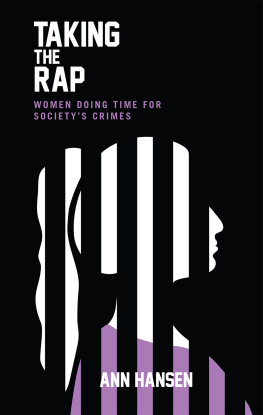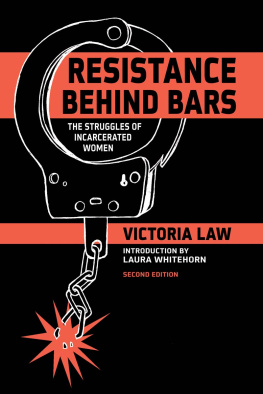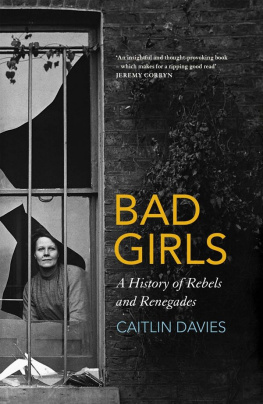To all the women who have died in Canadian prisons. They are survivors of residential schools, abusive relationships, addictions, and other mental health issues, and of punishing prison sentences for acts of economic survival.
This book takes off from where my previous memoir, Direct Action: Memoirs of an Urban Guerrilla, ends, which is on the day of our arrests, January 20, 1983. Considering what we know about memory, what is the point of writing a book that begins thirty years ago, in 1983? What is the point of writing a book about prison conditions when thirty years of change have drastically altered their landscape, not just in terms of the physical buildings, but also in terms of policy?
When I was first arrested in British Columbia in January 1983, I was remanded to Oakallaor as it was officially known, the Lower Mainland Regional Correctional Centreuntil I was finally convicted in the summer of 1984 and sent to the Prison for Women (P4W) in Kingston, Ontario. In 2014, Oakalla is no more, and P4W was closed in 2000. Today, women serving federal time in Ontario are sent to the Grand Valley Institution for Women in Kitchener. How relevant are my observations and analysis going to be?
Federally sentenced prisoners still can only make a maximum of $6.90 a day, the same maximum daily wage as thirty years ago, despite the increased rate of inflation (if this wage had been adjusted for inflation, it would be $13.28 a day today, according to the Bank of Canada calculator) and the increased number of items that prisoners must purchase on canteen. The police-reported crime rate has been on a steady decline over the past two decades, although the percentage of prisoners per capita has been exponentially increasing. In 2012, 20 percent of all federally sentenced prisoners in Canada are double bunked, a practice that contravenes the United Nations Standard Minimum Rules on the Treatment of Prisoners. () Writing a prison memoir that goes back thirty years is very relevant, in light of the fact that so many aspects of prison conditions have stayed the same, and those that have not have been on a steady decline since that time.
If theres one aspect of the prison system that has struck me over the past thirty years, it would be how little has changed: different buildings, same power dynamics; different policies, same MO. To be succinct, my prison memories from the last two decades of the twentieth century are just as relevant as my memories from the first decade of the twenty-first century.
I use the words prisoners, prisons, and imprison, instead of the more commonly used terms inmates, institutions, and incarcerate, quite consciously, because they more accurately describe the people and place. As radical linguists such as Noam Chomsky have pointed out, words are not neutral in terms of political or social values. () Language plays a role in shaping our consciousness.
Our consciousness of reality is influenced by the dialectic conflict between our objective reality and the words our culture uses to describe it. For example, there is a real animal we commonly refer to as a pig, and then there is the word used by the agricultural business communityproductto describe the same animal. The dialectical conflict between a person seeing a pig, but hearing it repeatedly described as a product by agri-business, changes a persons consciousness so they begin to view the animal as an inanimate consumer product.
Over time the Western media, which is owned by Western ruling elites, have adopted the language that reflects the values and assumptions of the status quo. As a result, words such as inmate, offender, institution, and penitentiary are commonly used to describe what I refer to in this book as prisoners and prisons. The benign terms the Western media use have the effect of depoliticizing the involuntary nature of confining another human being.
Historically, inmate was commonly used to refer to someone who is voluntarily and temporarily residing in some form of institution, such as a mental hospital. According to the Oxford Modern English Dictionary, institution is defined as 1) the act or an instance of instituting 2a) a society or organization founded esp. for charitable, religious, educational, or social purposes b) a building used by an institution 3) an established law, practice or custom. () None of these definitions includes imprisonment, and yet most modern prisons are officially labelled institutions, as in Grand Valley Institution for Women, Millhaven Institution, Kent Institution, and so on. The words inmate and institution have the overall effect of creating a subliminal image of the prisoner as someone who is voluntarily institutionalized for both their own and societys benefit. These words strip the prisoner of the involuntary, violent, and conflicted nature of their relationship with society once they have been confined within a prison.
Unlike my first memoir, the events in this book have not been previously published in newspaper articles or court transcripts. In order to protect the identities of real people, I have created composites by changing their physical traits as well as their names. There are exceptions to this rule. My Direct Action co-accused, Brent Taylor, Julie Belmas, Gerry Hannah, and Doug Stewart, are not composites, because their stories are already a part of the public record through media publications and court transcripts. I do mention the wardens of P4W, George Caron and Mary Cassidy, as well as the psychiatrists Dr. George and Dr. Duncan Scott, by name, because they were public servants whose decisions were open to public scrutiny.
I would like to claim that the events replicate reality accurately, but I can only claim that these events occurred, even though many of the timelines, conversations, emotions, and other details are not accurate. There are many culprits responsible for tainting my memory, but time has taken the greatest toll. Yet despite the fact that the descriptions of the events do not precisely mirror reality, these events did happen. If each chapter were a human body, the skeletal structure, organs, and muscle tissue are real, but the height of the body, the colour of the eyes, and structure of the nose, ears, and appendages are not.
Unfortunately, the memory is not reliable, and so two people describing the same event will more than likely describe two very different situations. If I have said things that anyone who believes they are one of the characters in this book does not agree with, my intentions were good, but my memory may not be. I have no axe to grind or dish of revenge to serve up cold. I am describing prison life as I remember it. But memory is an evil prankster that is unreliable at best, and at its worst, it turns facts into illusions that change shape or disappear entirely depending on the day and state of mind of the writer. Memory is responsible for more wrongful convictions than any other type of evidence presented in trials: The Innocence Project has determined that 75% of the 239 DNA exoneration cases had occurred due to inaccurate eye witness testimony. ()
My point here is that I am not immune to the frailties and trickery of my memory any more than the next person. I have tried to the best of my abilities to write a memoir that is based on events I believe are accurate, but I am sure that some of my disguised characters will swear that my version of reality is not accurate. The paradox is that neither of us is lying. However, despite any discrepancies over facts, in the tradition of Farley Mowat, I did not want to let the facts get in the way of truth. I can honestly say that this memoir speaks the truth.






